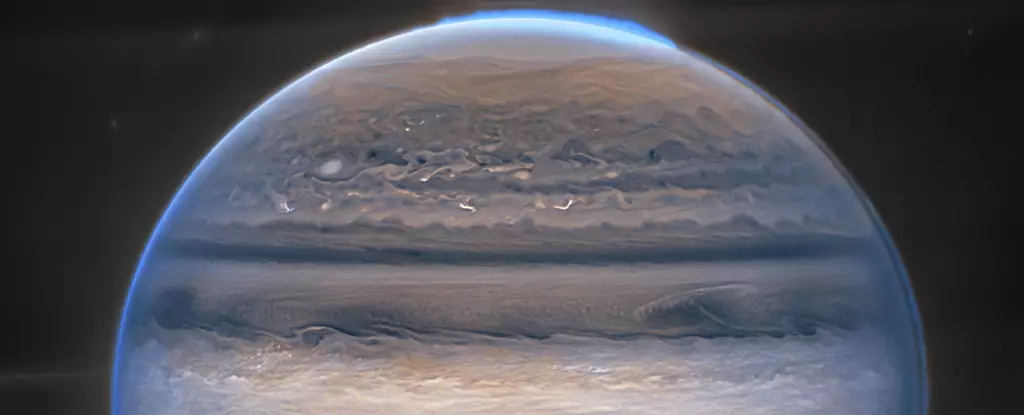Jupiter stands out in our solar system not just for its sheer size but for its unique composition and lack of a solid surface. Unlike the rocky planets that comprise our terrestrial neighbors—Mercury, Venus, Earth, and Mars—Jupiter exists as a vast ocean of gas and liquid, presenting an intriguing puzzle for scientists and astronomers alike. The exploration of this mammoth gas giant reveals a lot not only about itself but also about the origins and fortitude of the planetary neighborhood we call home.
Gravity is a key player in Jupiter’s composition, allowing it to become the largest planet in the solar system, housing more than a thousand Earths within its cloud layers. This immense size creates a severe atmospheric pressure gradient that can, at deeper levels, reach unimaginable extremes. Despite appearing smooth and uniform from a distance, Jupiter’s atmosphere is anything but calm. Turbulent winds reaching speeds over 400 mph generate fierce storms, some rivaling the most destructive hurricanes experienced on Earth. This constant flux presents a chaotic energy that continues to baffle scientists.
Jupiter’s atmosphere, predominately made up of hydrogen and helium, gives rise to fascinating phenomena as one delves deeper into its layers. Starting from its upper atmosphere, just like Earth, the pressure increases downwards. However, the gaseous nature of Jupiter means that by the time one descends several hundred miles, the pressure becomes profound, exerting forces so immense that they could crush any spacecraft or human body long before reaching any conceivable “surface.”
If one could hypothetically plummet into the depths of Jupiter, the experience would transform drastically as they descend. Approximately 1,000 miles beneath the swirling clouds, the hydrogen transitions into a liquid state. This unique environment forms what can be thought of as an enormous ocean, albeit one composed solely of hydrogen, devoid of water as we know it.
Diving deeper—over 20,000 miles down—things become even stranger. The hydrogen undergoes a remarkable transition, taking on liquid metallic properties. Here, electrons are freed from their atomic confines, creating an unorthodox state of matter. This phenomenon is so alien that scientists have only recently managed to recreate it under laboratory conditions, highlighting our limited understanding of such extreme environments.
Beyond these liquid layers lies Jupiter’s enigmatic core. Contrary to what one might imagine, this core is not solid. Instead, it resembles a super dense mixture, potentially comprising metallic and liquid elements. The astonishing pressure at this core can be likened to an environment with over 100 million times the atmospheric pressure found on Earth. Such colossal forces render usual definitions of “solid” and “liquid” almost meaningless.
Despite being a harsh and unforgiving world, Jupiter plays a crucial role in sustaining life on Earth. Its colossal gravity acts as a magnetic shield, protecting the inner planets from a myriad of asteroids and comets that could disrupt life as we know it. By gravitationally influencing these objects’ paths, Jupiter has reduced the likelihood of catastrophic collisions that might have led to extinction events similar to the one that wiped out the dinosaurs.
In a sense, Jupiter’s existence is a testament to the delicate balance that has enabled life to flourish on our planet. Its gravitational pull stabilizes the inner solar system, allowing for a more predictable and safe orbits of celestial bodies.
As inhospitable as Jupiter is, its moons present tantalizing opportunities in the quest to find extraterrestrial life. Europa, one of Jupiter’s largest moons, is an intriguing candidate due to its suspected subterranean ocean. Scientists are poised to learn more with the planned launch of NASA’s Europa Clipper mission in late 2024, aimed at thoroughly investigating its icy surface and the ocean lurking beneath. Could this hidden ocean harbor life? As we venture further into this exploration, humanity stands on the precipice of potentially groundbreaking discoveries about life beyond Earth.
Jupiter is a compelling fusion of chaos, mystery, and cosmic significance. It may lack a solid surface or the familiarity of Earth-like terrain, but its gaseous layers, powerful gravitational influence, and potential for subsurface life on its moons make it a pivotal focal point in our understanding of planetary science. As we continue to explore this mighty gas giant, we not only expand our knowledge of the universe but also reflect on the very conditions that allow life to exist. The forthcoming missions aim to peel back some of the complexities of Jupiter, potentially redefining what we understand about life itself in the cosmos.


Leave a Reply